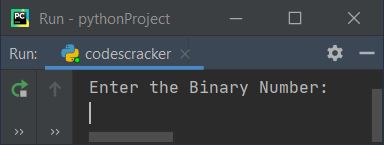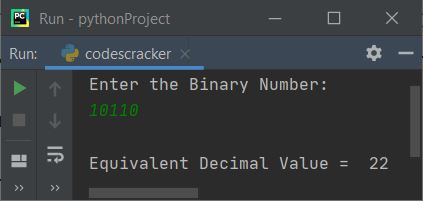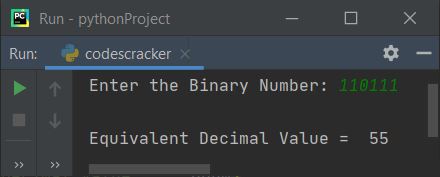- Python Basic Programs
- Python Program Examples
- Python Print Hello World
- Python Get Input from User
- Python Add Two Numbers
- Add Subtract Multiply Divide
- Python Check Even or Odd
- Python Check Prime or Not
- Python Check Alphabet or Not
- Python Check Vowel or Not
- Python Check Leap Year or Not
- Check Reverse equal Original
- Check Positive Negative Zero
- Python Check Armstrong or Not
- Python Check Palindrome or Not
- Python Check Perfect Number
- Python Find Reverse of Number
- Python Count Digits in Number
- Python Add Digits of Number
- Sum of First and Last Digits
- Python Product of Mid Digits
- Sum of Squares of Digits
- Interchange Digits of Number
- Python Sum of n Numbers
- Python Print ASCII Values
- Python Swap Two Numbers
- Python Swap Two Variables
- Python Fahrenheit to Celsius
- Python Celsius to Fahrenheit
- Python Display Calendar
- Python Days into Years, Weeks
- Find Largest of Two Number
- Find Largest of Three Number
- Python Print Fibonacci Series
- Generate Armstrong Numbers
- Python Make Simple Calculator
- Python Add Binary Numbers
- Binary Number Multiplication
- Python Mathematical Programs
- Find Sum of Natural Numbers
- Find Average of n Numbers
- Python Print Multiplication Table
- Print Table using Recursion
- Python Find Average Percentage
- Python Find Grade of Student
- Find Square Root of Number
- Python Print Prime Numbers
- Find Numbers Divisible by
- Python Find Factors of Number
- Python Find Factorial of a Number
- Python Find HCF & LCM
- Python Kilometres to Miles
- Python Find Area of Square
- Python Find Area of Rectangle
- Python Find Area of Triangle
- Python Find Area of Circle
- Python Find Perimeter of Square
- Find Perimeter of Rectangle
- Python Find Perimeter of Triangle
- Find Circumference of Circle
- Python Simple Interest
- Python Solve Quadratic Equation
- Python Different Set of Operations
- Python Display Powers of 2
- Python Find nCr & nPr
- Python Pattern Programs
- Python Print Pattern Programs
- Python Print Diamond Pattern
- Python Print Floyd's Triangle
- Python Print Pascal's Triangle
- Python List Programs
- Python Count Even/Odd in List
- Python Positive/Negative in List
- Python Even Numbers in List
- Python Odd Numbers in List
- Python Sum of Elements in List
- Sum of Odd/Even Numbers
- Python Element at Even Position
- Python Element at Odd Position
- Python Search Element in List
- Python Largest Number in List
- Python Smallest Number in List
- Python Second Largest in List
- Python Second Smallest in List
- Python Insert Element in List
- Python Delete Element from List
- Python Multiply Numbers in List
- Swap Two Elements in List
- Python 1D Array Program
- Python Linear Search
- Python Binary Search
- Python Insertion Sort
- Python Bubble Sort
- Python Selection Sort
- Remove Duplicates from List
- Python Reverse a List
- Python Merge Two List
- Python Copy a List
- Python Conversion Programs
- Python Decimal to Binary
- Python Decimal to Octal
- Python Decimal to Hexadecimal
- Python Binary to Decimal
- Python Binary to Octal
- Python Binary to Hexadecimal
- Python Octal to Decimal
- Python Octal to Binary
- Python Octal to Hexadecimal
- Python Hexadecimal to Decimal
- Python Hexadecimal to Binary
- Python Hexadecimal to Octal
- Python Matrix Programs
- Python Add Two Matrices
- Python Subtract Two Matrices
- Python Transpose Matrix
- Python Multiply Matrices
- Python String Programs
- Python Print String
- Python Find Length of String
- Python Compare Two Strings
- Python Copy String
- Python Concatenate String
- Python Reverse a String
- Python Swap Two Strings
- Python Uppercase to Lowercase
- Python Lowercase to Uppercase
- Python Check Substring in String
- Python Count Character in String
- Count Repeated Characters
- Python Count Word in Sentence
- Python Count Each Vowels
- Python Capitalize Character
- Python Capitalize Word in String
- Python Smallest/Largest Word
- Remove Spaces from String
- Remove Duplicate Character
- Remove Vowels from String
- Remove Punctuation from String
- Python Remove Word in String
- Python Remove Duplicate Words
- WhiteSpace to Hyphens
- Replace Vowels with Character
- Replace Character in String
- Python Sort String in Alphabetical
- Sort Word in Alphabetical Order
- Extract Number from String
- Python Check Anagram Strings
- Python File Programs
- Python Read a File
- Python Write to File
- Python Append Text to File
- Python Copy Files
- Python Merge Two Files
- Python Counts Characters in File
- Python Count Words in File
- Python File Content in Reverse
- Python Lines Contains String
- Python Delete Line from File
- Python Capitalize Word in File
- Python Replace Text in File
- Replace Specific Line in File
- Python Find Size of File
- Python List Files in Directory
- Python Delete Files
- Python Misc Programs
- Python Reverse a Tuple
- Python Merge Two Dictionary
- Python bytes to String
- Python bytearray to String
- Generate Random Numbers
- Python Print Address of Variable
- Python Print Date and Time
- Python Get IP Address
- Python Shutdown/Restart PC
- Python Tutorial
- Python Tutorial
Python Program to Convert Binary to Decimal
In this article, we've created some programs in Python, to convert binary number entered by user at run-time to its equivalent decimal value. Here are the list of programs:
- Binary to Decimal using while loop
- Using for loop
- Using int()
- Using function
- Using class
Note - Before creating these programs, if you're are not aware about steps used for the conversion, refer to Binary to Decimal Conversion Steps and Formula to get every required thing about the topic.
Binary to Decimal using while Loop
To convert binary to decimal number in Python, you have to ask from user to enter a number in binary number system to convert that number into decimal number system as shown in the program given here.
The question is, write a Python program to convert binary to decimal using while loop. Here is its answer:
print("Enter the Binary Number: ") bnum = int(input()) dnum = 0 i = 1 while bnum!=0: rem = bnum%10 dnum = dnum + (rem*i) i = i*2 bnum = int(bnum/10) print("\nEquivalent Decimal Value = ", dnum)
Here is its sample run. This is the initial output:

Now supply the input say 10110 as binary number, press ENTER key to convert it into its equivalent decimal value:

The dry run of following block of code:
while bnum!=0: rem = bnum%10 dnum = dnum + (rem*i) i = i*2 bnum = int(bnum/10)
with user input, 10110 goes like:
- Initial value, bnum=10110 (entered by user), dnum=0, i=1
- The condition bnum!=0 (of while loop) or 10110!=0 evaluates to be true, therefore program flow goes inside the loop and evaluates all its four statements, one by one
- That is, bnum%10 or 10110%10 or 0 gets initialized to rem. And dnum+(rem*i) or 0+(0*1) or 0 gets initialized to dnum. Then i*2 or 1*2 or 2 gets initialized to i. Finally int(bnum/10) or int(10110/10) or 1011 gets initialized to bnum
- The condition of while loop again gets evaluated with new value of bnum. That is, bnum!=0 or 1011!=0 evaluates to be true, therefore program flow again goes inside the loop
- bnum%10 or 1011%10 or 1 gets initialized to rem
- dnum+(rem*i) or 0+(1*2) or 2 gets initialized to dnum
- i*2 or 2*2 or 4 gets initialized to i
- int(bnum/10) or int(1011/10) or 101 gets initialized to bnum
- Again the condition bnum!=0 or 101!=0 evaluates to be true, therefore program flow again goes inside the loop
- bnum%10 or 101%10 or 1 gets initialized to rem
- dnum+(rem*i) or 2+(1*4) or 6 gets initialized to dnum
- i*2 or 4*2 or 8 gets initialized to i
- int(bnum/10) or int(101/10) or 10 gets initialized to bnum
- Again the condition bnum!=0 or 10!=0 evaluates to be true, therefore program flow again goes inside the loop
- bnum%10 or 10%10 or 0 gets initialized to rem
- dnum+(rem*i) or 6+(0*8) or 6 gets initialized to dnum
- i*2 or 8*2 or 16 gets initialized to i
- int(bnum/10) or int(10/10) or 1 gets initialized to bnum
- Again the condition bnum!=0 or 1!=0 evaluates to be true, therefore program flow again goes inside the loop
- bnum%10 or 1%10 or 1 gets initialized to rem
- dnum+(rem*i) or 6+(1*16) or 22 gets initialized to dnum
- i*2 or 16*2 or 32 gets initialized to i
- int(bnum/10) or int(1/10) or 0 gets initialized to bnum
- Now the condition bnum!=0 or 0!=0 evaluates to be false, therefore the execution of while loop gets ended
- And the value of dnum, that is 22 gets printed on output. Thats it
Binary to Decimal using for Loop
This program uses for loop, instead of while. The str() method is used to convert any type of value to a string type. And the len() is used to find the length of a string. The range() returns a sequence of values from 0 to one less than the value defined as its argument. By default, each time the value gets incremented by 1.
print("Enter the Binary Number: ", end="") bnum = int(input()) dnum = 0 m = 1 blen = len(str(bnum)) for k in range(blen): rem = bnum%10 dnum = dnum + (rem * m) m = m * 2 bnum = int(bnum/10) print("\nEquivalent Decimal Value = ", dnum)
Here is its sample run with user input, 11110110:

Binary to Decimal using int()
This program uses int() method to convert binary to decimal. That is, we've received a value from user as input. While receiving the value using input() method, we've not specified the type.
Therefore the value entered by user, treated as a string type value. Therefore, using int(), the string type value gets converted into an integer type value of base 2, that is binary number using int(givenValue, 2) as shown in the program given below:
print("Enter the Binary Number: ", end="") bnum = input() dnum = int(bnum, 2) print("\nEquivalent Decimal Value = ", dnum)
Here is its sample run with user input 110111 as binary number:

Binary to Decimal using Function
This program uses a user-defined function named BinToDec() to do the same job, that is converting of an binary number to its decimal equivalent.
def BinToDec(b): return int(b, 2) print("Enter the Binary Number: ", end="") bnum = input() dnum = BinToDec(bnum) print("\nEquivalent Decimal Value = ", dnum)
The function, BinToDec() takes binary number as its argument, and returns its equivalent decimal value using int() with base 2
Binary to Decimal using Class
This is the last program of this article, created using a class named CodesCracker, an object-oriented feature of Python.
class CodesCracker: def BinToDec(self, b): return int(b, 2) print("Enter the Binary Number: ", end="") bnum = input() ob = CodesCracker() dnum = ob.BinToDec(bnum) print("\nEquivalent Decimal Value = ", dnum)
An object, ob is created of class CodesCracker to access its member function named BinToDec() using dot (.) operator. Rest of the things works like a normal function.
Same Program in Other Languages
« Previous Program Next Program »